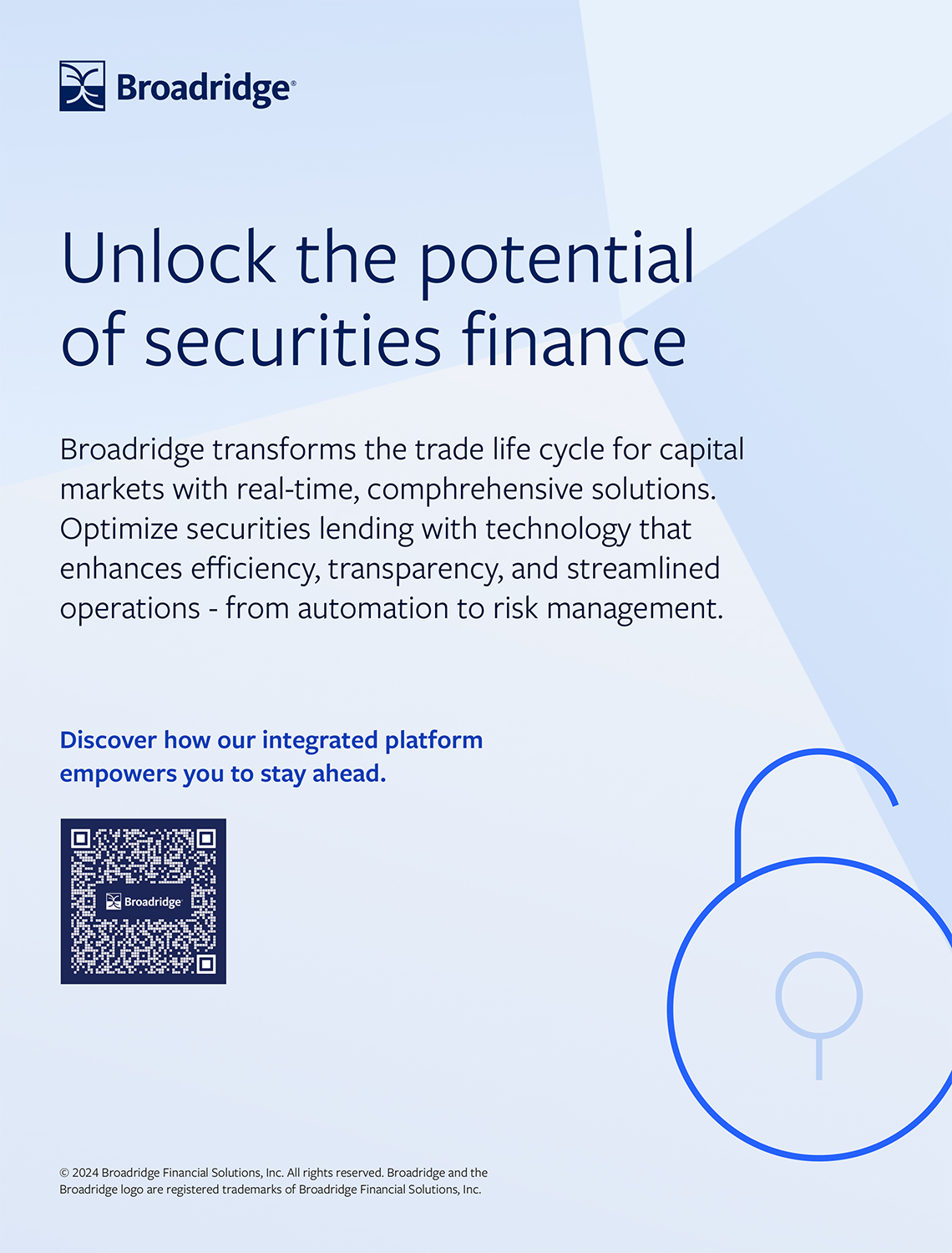LEIs could conjure up cost benefits, says McKinsey & Company
31 October 2019 London
 Image: Shutterstock
Image: Shutterstock
Banks could recoup some of the costs of creating legal entity identifiers (LEIs) under Securities Financing Transactions Regulation (SFTR) with operation cost savings elsewhere, according to a new market whitepaper.
The report by McKinsey & Company, in partnership with the Global Legal Entity Identifier Foundation, claims that savings of “at least 10 percent of total operations costs for client onboarding and trading processing for banks adopting the LEI are possible”.
An LEI is a unique code that identifies legal entities participating in financial transactions and is required by firms to fulfill their regulatory reporting obligations.
LEIs are already required under the European Market Infrastructure Regulation (EMIR) and the Markets in Financial Instruments Regulation (MiFID), as well as being a key component of the EU’s SFTR, which is due to come into force in April 2020.
The report, entitled ‘The Legal Entity Identifier: The Value of Unique Counterparty ID’, emphasised that the LEI’s primary value, other than being required by market regulations, is derived from reducing the cost of onboarding clients and of middle- and back-office activities related to the processing of stocks, bonds, and other securities trades.
According to the report, the operational costs savings could amount to $150 million annually for the broader investment banking industry.
Commenting on the whitepaper, Simon Wood, CEO at Ubisecure, a software company, said that LEIs connect the many pieces of reference data for processes related to know-your-customer (KYC) and anti-money laundering rules.
“In most cases, different areas in the lender use different identifiers for the same client – and that makes what should be a simple task becomes very complex and expensive,” he highlighted.
“The LEI enables cost-reduction by making the reference data standardised and readily available during both the initial KYC process and then the ongoing identification of counterparties as trades occur.”
The whitepaper’s findings will be welcome news for many in the securities financing industry, who are in the midst of building LEIs into their transactions ahead of SFTR’s go-live. The LEI requirement of SFTR is often cited as one of the more burdensome features of the regulation due to its complexity and the cost of the technical build, compared to existing rules frameworks.
SFTR reporting requirements mandates 155 data fields, compared to 129 required under EMIR for over-the-counter derivatives.
Elsewhere, the International Securities Lending Association (ISLA) has repeatedly warned that the consequence of some market players not having their LEIs in place would be a drain on overall liquidity as they would be unable to transact in the securities finance markets once SFTR is live.
In a survey in September, ISLA warned that “considerable effort” is still required to improve asset issuer registration for LEIs to meet the requirements of SFTR.
ISLA’s market research, along with others, has shown that European market participants are well on their way to having LEIs in place for their securities finance transactions but that non-EU entities that will not directly be in-scope for SFTR are lagging behind in their preparations. This will create complications down the road as the regulation’s reporting requirements include transactions data from non-EU counterparts.
Commenting on this mismatch, Phillip Morgan, COO and head of sales at Pirum, explained that coverage of LEIs within the EU is relatively high driven by existing reporting regimes, such as EMIR and the MiFID, while adoption rates outside of the EU remain at lower levels.
“This will present challenges for institutions required to report an issuer LEI as part of their overall SFTR reporting requirement, especially as most firms transact and receive collateral in assets issued both within and outside of the EU,” he explained.
“We’re working to support our clients with the sourcing of issuer LEIs when they are available and at the same time we’re also working with the trade association working groups to help highlight some of these challenges to the regulators and propose alternative, practical approaches.”
The report by McKinsey & Company, in partnership with the Global Legal Entity Identifier Foundation, claims that savings of “at least 10 percent of total operations costs for client onboarding and trading processing for banks adopting the LEI are possible”.
An LEI is a unique code that identifies legal entities participating in financial transactions and is required by firms to fulfill their regulatory reporting obligations.
LEIs are already required under the European Market Infrastructure Regulation (EMIR) and the Markets in Financial Instruments Regulation (MiFID), as well as being a key component of the EU’s SFTR, which is due to come into force in April 2020.
The report, entitled ‘The Legal Entity Identifier: The Value of Unique Counterparty ID’, emphasised that the LEI’s primary value, other than being required by market regulations, is derived from reducing the cost of onboarding clients and of middle- and back-office activities related to the processing of stocks, bonds, and other securities trades.
According to the report, the operational costs savings could amount to $150 million annually for the broader investment banking industry.
Commenting on the whitepaper, Simon Wood, CEO at Ubisecure, a software company, said that LEIs connect the many pieces of reference data for processes related to know-your-customer (KYC) and anti-money laundering rules.
“In most cases, different areas in the lender use different identifiers for the same client – and that makes what should be a simple task becomes very complex and expensive,” he highlighted.
“The LEI enables cost-reduction by making the reference data standardised and readily available during both the initial KYC process and then the ongoing identification of counterparties as trades occur.”
The whitepaper’s findings will be welcome news for many in the securities financing industry, who are in the midst of building LEIs into their transactions ahead of SFTR’s go-live. The LEI requirement of SFTR is often cited as one of the more burdensome features of the regulation due to its complexity and the cost of the technical build, compared to existing rules frameworks.
SFTR reporting requirements mandates 155 data fields, compared to 129 required under EMIR for over-the-counter derivatives.
Elsewhere, the International Securities Lending Association (ISLA) has repeatedly warned that the consequence of some market players not having their LEIs in place would be a drain on overall liquidity as they would be unable to transact in the securities finance markets once SFTR is live.
In a survey in September, ISLA warned that “considerable effort” is still required to improve asset issuer registration for LEIs to meet the requirements of SFTR.
ISLA’s market research, along with others, has shown that European market participants are well on their way to having LEIs in place for their securities finance transactions but that non-EU entities that will not directly be in-scope for SFTR are lagging behind in their preparations. This will create complications down the road as the regulation’s reporting requirements include transactions data from non-EU counterparts.
Commenting on this mismatch, Phillip Morgan, COO and head of sales at Pirum, explained that coverage of LEIs within the EU is relatively high driven by existing reporting regimes, such as EMIR and the MiFID, while adoption rates outside of the EU remain at lower levels.
“This will present challenges for institutions required to report an issuer LEI as part of their overall SFTR reporting requirement, especially as most firms transact and receive collateral in assets issued both within and outside of the EU,” he explained.
“We’re working to support our clients with the sourcing of issuer LEIs when they are available and at the same time we’re also working with the trade association working groups to help highlight some of these challenges to the regulators and propose alternative, practical approaches.”
NO FEE, NO RISK
100% ON RETURNS If you invest in only one securities finance news source this year, make sure it is your free subscription to Securities Finance Times
100% ON RETURNS If you invest in only one securities finance news source this year, make sure it is your free subscription to Securities Finance Times



